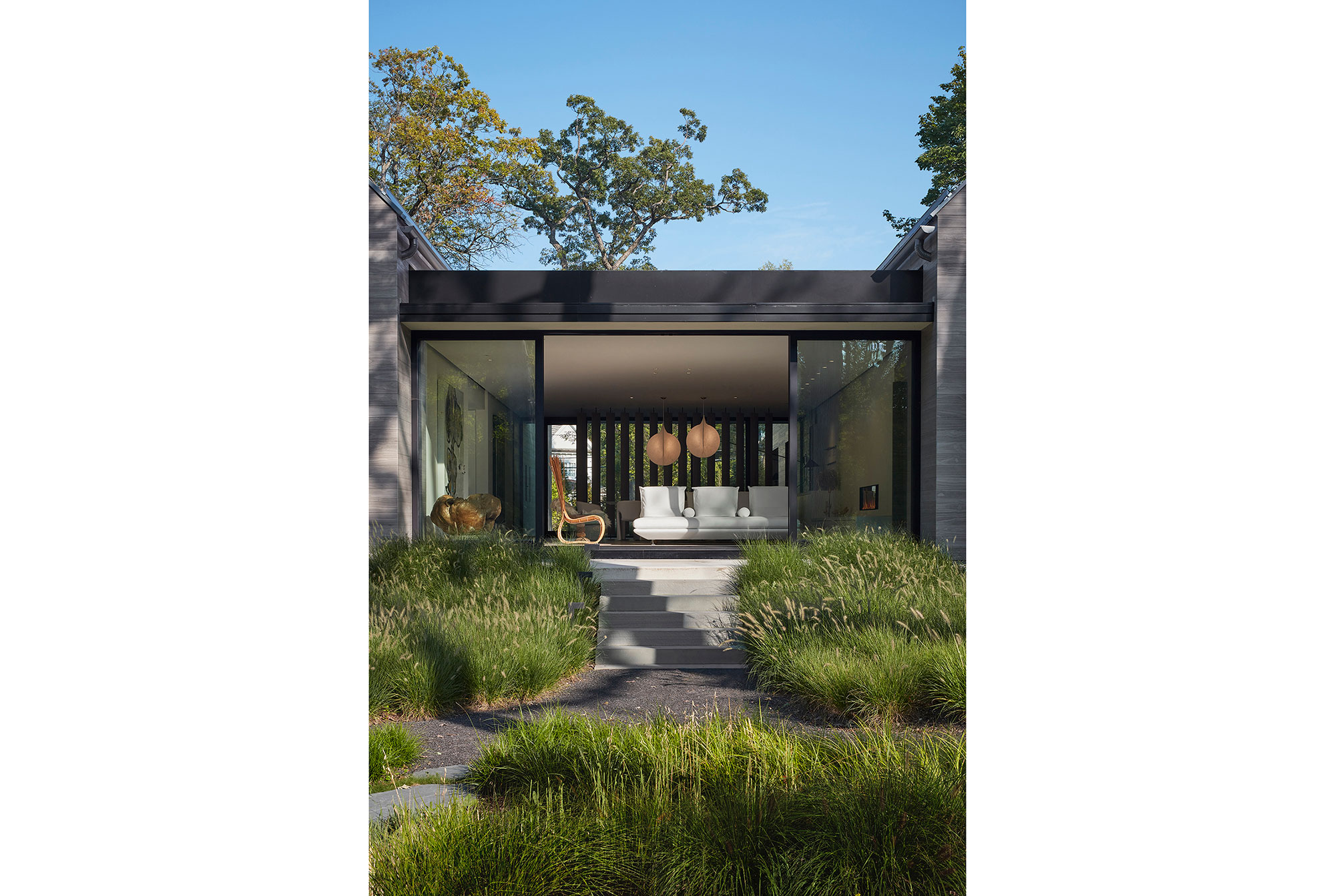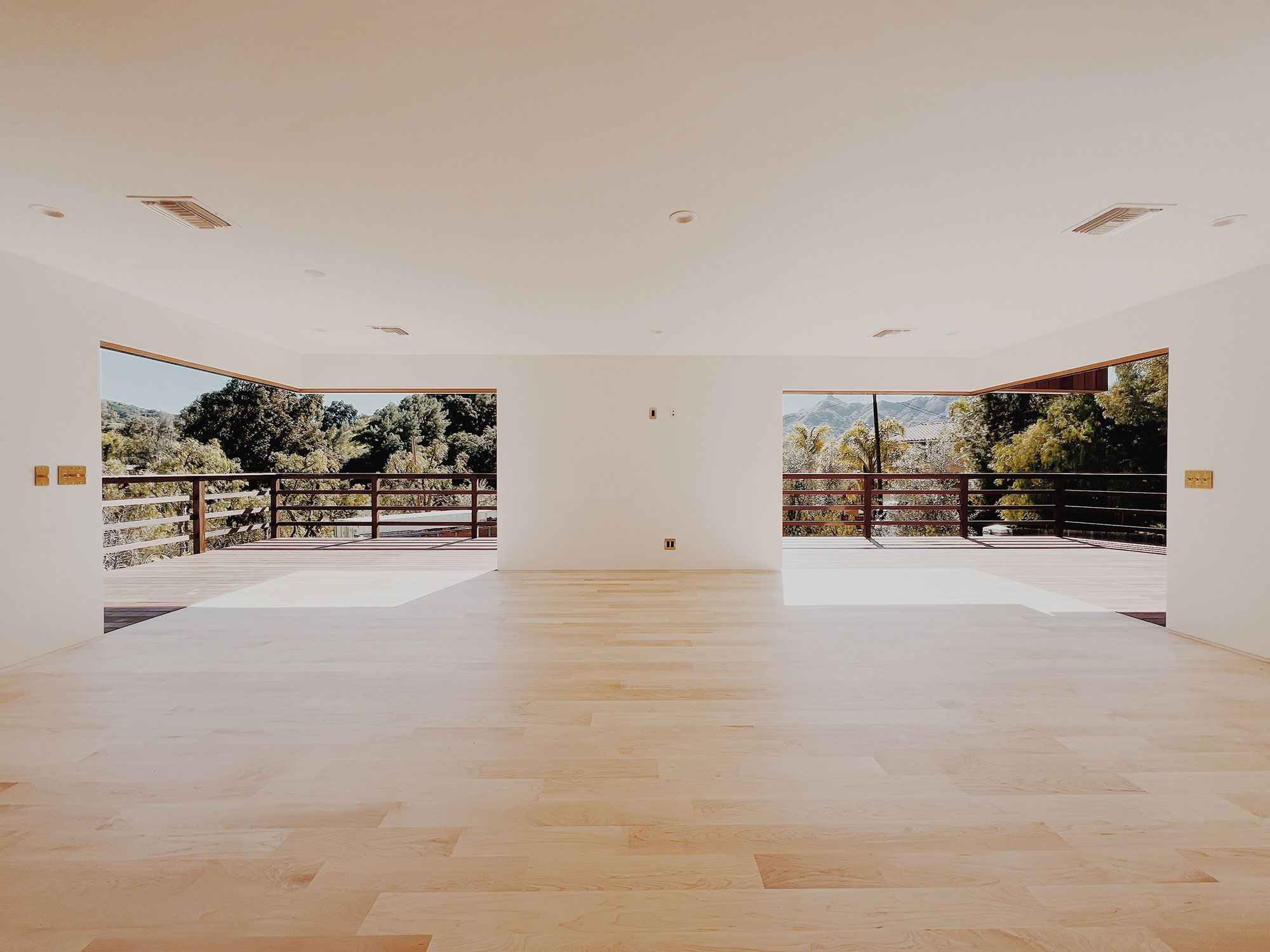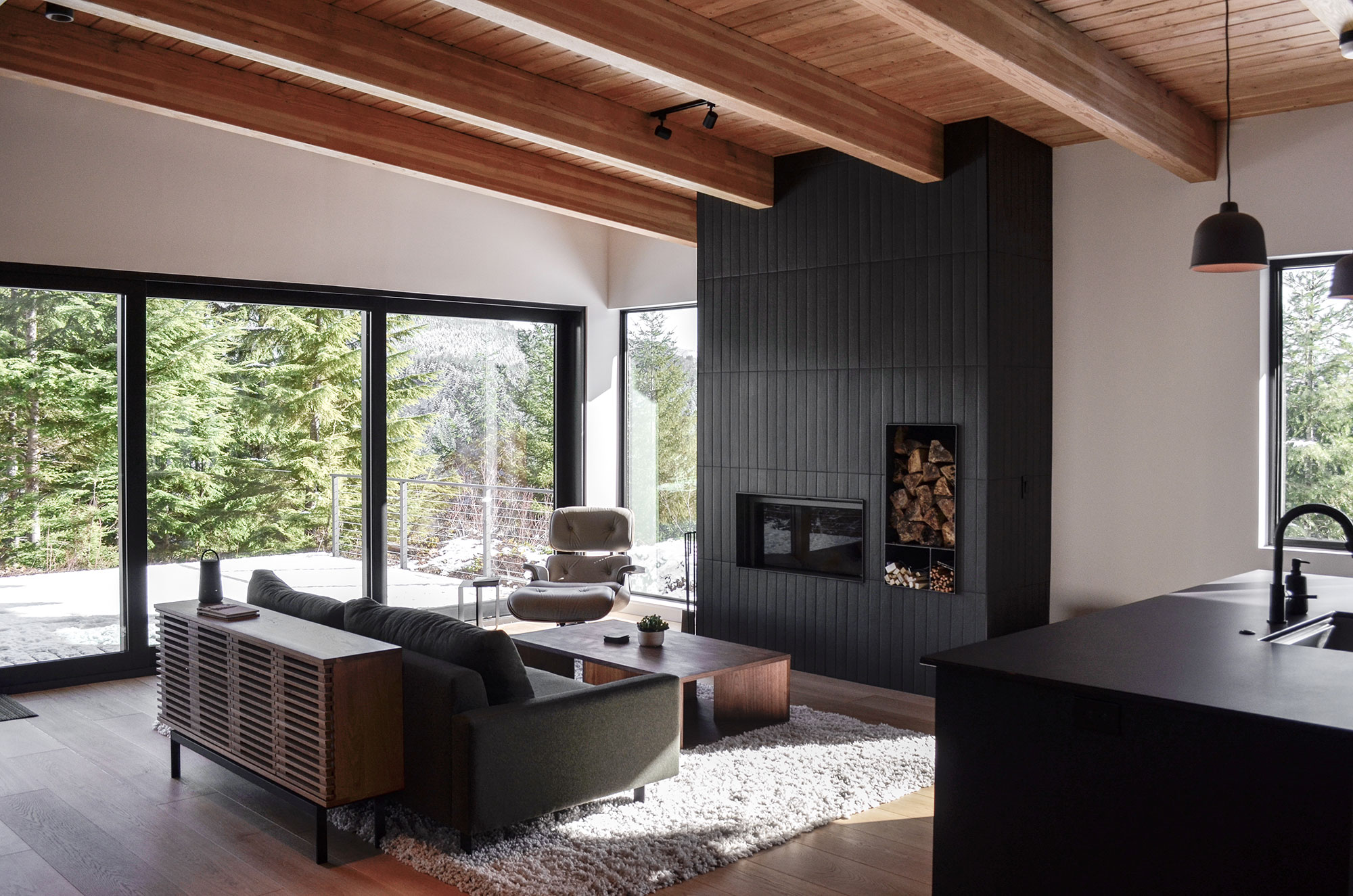Big Doors, Big Dreams
Movable Glass Panel Door Systems: Capturing Design Flexibility
By their very design, movable glass or multi-panel door systems enable effortless engagement between the interior and outdoors. A movable glass door system is a door or window system with multiple operable panels that open sequentially to create an opening exceeding traditional limitations (see sidebar Sliding or Folding? Details to Consider for full details on operation types). Reaching beyond the capability of a hinged patio door, multi-panel systems transition between indoors and out. The wide and seamless opening they furnish blends nature right into any home, eliminating any perceived divide.
Windows and doors are also playing a crucial role in modernizing design, helping set the up-to-date home apart from its traditional counterpart. A Contemporary Craftsman stands out on the street because of its bold incorporation of windows along the front facade; an American Farmhouse style might feature a pivot entry door system greater than 6 feet wide and a multi-panel zero-post corner system. A tiny ADU is dominated by a large facade composed of glass sliding doors. Today’s leading designs are, at their core, glass-centric. To modernize a fenestration package, narrow frames, stiles, and rails are necessary. In style, frame elements should be minimized, with square lines, rather than traditional bevels.
Hardware has undergone a similar reformation. Locks and handles are combined into a seamless, simplified, single system, removing unnecessary visual clutter from doors and windows. Door sills are completely recessed, avoiding the creation of a defining line between rooms or spaces.
Contemporary design is also changing window framing materials. While all-aluminum windows and doors were once a budget-driven, lower-grade window, thin-frame all-aluminum window and door packages with high performance values are currently in demand to capture a more up-to-date feel in homes. Metal finishes, whether aluminum, clad, or anodized, dominate the current palette. Regardless of framing material selected–wood, clad, or metal–thinner frames with simplified details define the trend.
Unique window and door configurations more commonly seen in commercial spaces are also being embraced for residential purposes, as smaller homes capitalize on both space and distinctive design. Their translation from commercial into residential is changing the face of homes. Massive multi-slide and folding door systems are a hallmark of the trend, but beyond this staple is also an increased use of doors with zero post corners. Additionally, folding or multi-slide windows that combine directly into a multiple-panel door system, without a post, are gaining in popularity.
Transforming any Lifestyle with Movable Glass Panel Doors
Large expanses of glass constantly bring in additional daylight and vibrant outdoor views of land and sky. Expansive openings transform the entire experience of indoor-outdoor living, creating a boundless feeling. Small spaces should not confine people in the ways they live, work, and play. Any time architects can bring a sense of boundlessness to indoor spaces, those spaces live larger. Moveable glass panel door systems and full view glass doors offer a tool to achieve precisely that vision.

Photo by Kendall McCaugherty; courtesy of LaCantina
Movable glass panel doors are not simply a design focal point, they also play a pivotal role in connecting people to wellness and nature.
ENHANCING LIFE
The modern home should not just be livable, it should enhance the lifestyle and health of its occupants. The best design does not have to feel torn between these goals; rather it can facilitate the cooperation of these elements through new products and layouts.
Incorporating Health from the Outside in with Movable Glass Panel Door Systems
Movable glass panel door systems not only open design opportunities by erasing the border between inside and out, they also enhance the health of any structure, regardless of size.
IAQ
Indoor air quality (IAQ) is a critical aspect of sustainable, holistic design. The term IAQ refers to the air quality within and around buildings and structures, especially as it relates to the health and comfort of building occupants. While pollution of outdoor air is a recognized concern, common pollutants can also accumulate indoors, creating the risk of health concerns inside. As home envelopes and duct systems are built tighter to save energy and meet increasingly stringent codes, these tighter systems are more likely to trap contaminants indoors. Studies from the EPA on human exposure to air pollutants show that indoor levels of pollutants may be two to five times greater, and sometimes even more than 100 times higher, than outdoor levels.6 To compound the issue, people now spend almost 90 percent of their day indoors–65 percent of that in their homes.7
There are three basic strategies for improving indoor air quality, as recommended by the EPA: source control, improved ventilation, and air cleaners.8 The introduction of outdoor air is central to promoting better air quality. Increasing the amount of outdoor air coming indoors lowers the concentrations of indoor air pollutants in the home.
Using movable glass panel door systems opens areas that would otherwise be confined by walls. This aids in whole-house air circulation, bringing clean and fresh air into the structure and replacing existing, stale air. Larger openings allow for greater natural ventilation and establish a broader ventilation pathway. They are also very effective in ventilating smaller interiors. By removing the divide between interior and exterior living spaces, multiple panel systems also draw occupants outside more frequently.

Photo by Mason St. Peter; courtesy of LaCantina
Disappearing pocket doors connect interior and exterior spaces, with two corners transformed into zero post pocket systems.
Natural Light
Just as expansive openings create better ventilation, the increased use of glass in movable glass panel door systems allows for greater natural light transmittance. As knowledge about the relationship between light and health increases, the importance of daylighting to human welfare is being prioritized. Daylighting has been associated with improved mood, enhanced morale, less fatigue, and reduced eyestrain.9 “Design can play a key role in improving the health and well-being of the public,” notes Kyle Konis, Ph.D, AIA, and Director of the Chase L. Leavitt Building Science Program.10 Konis pioneered research to develop a daylighting metric and design assist tool capable of assessing the circadian effectiveness of architectural space.11 For Konis, areas within a building that do not achieve lighting conditions necessary for effective circadian stimulus can be labeled as biologically dark and considered problematic for health and well-being.12
By replacing an entire traditional wall with glass, multi-panel systems can maximize the provision of beneficial light to the interior. Introducing daylighting into interior spaces has proven positive health implications, from reducing headaches induced by artificial light to diminishing the symptoms of people affected by seasonal affective disorders (SAD). Bringing natural light to the interior of a building also allows for passive solar heat gain and minimizes the use of electricity in artificial lighting.
Movable glass panel doors used in a design harness additional holistic advantages for a project. Because the innovative design of movable glass panel door systems connects both indoors and out, the system maximizes any space to define a boundless living experience. Using products that are domestic contributes to green design goals by minimizing fuel and transportation costs normally associated by importing products from areas outside of the United States. Certain manufacturers also pack and ship systems using recycled materials, providing safe transport and smart use of renewable resources.









